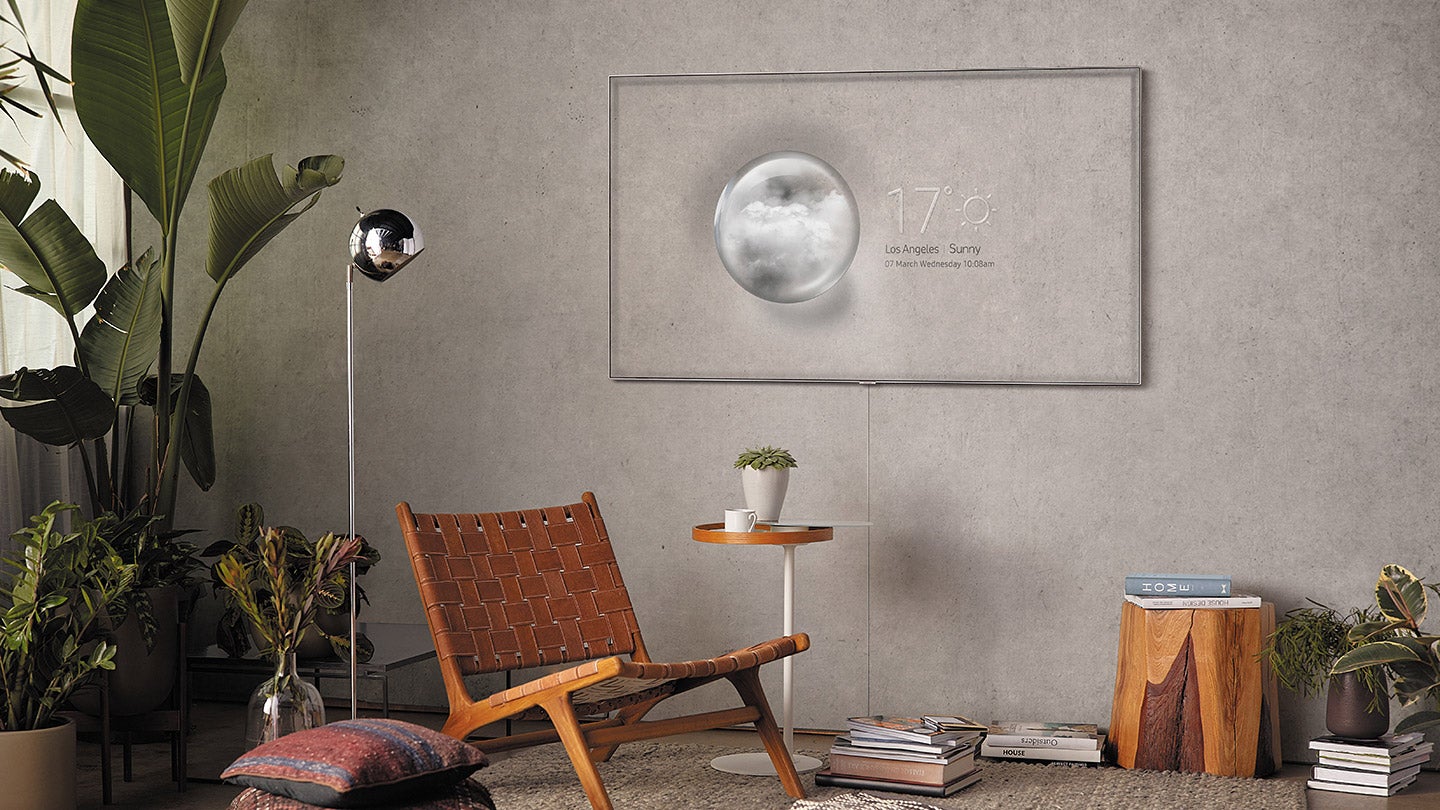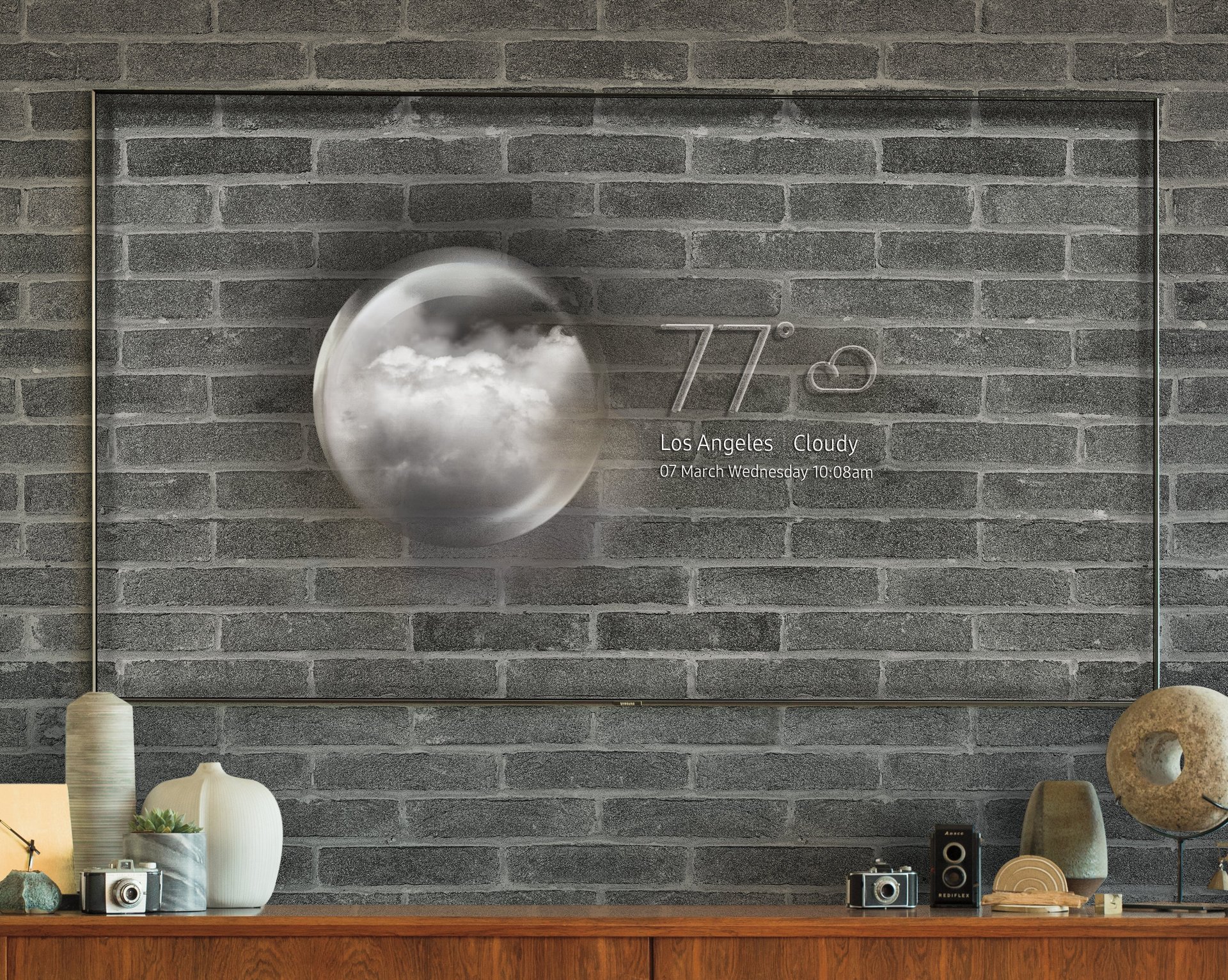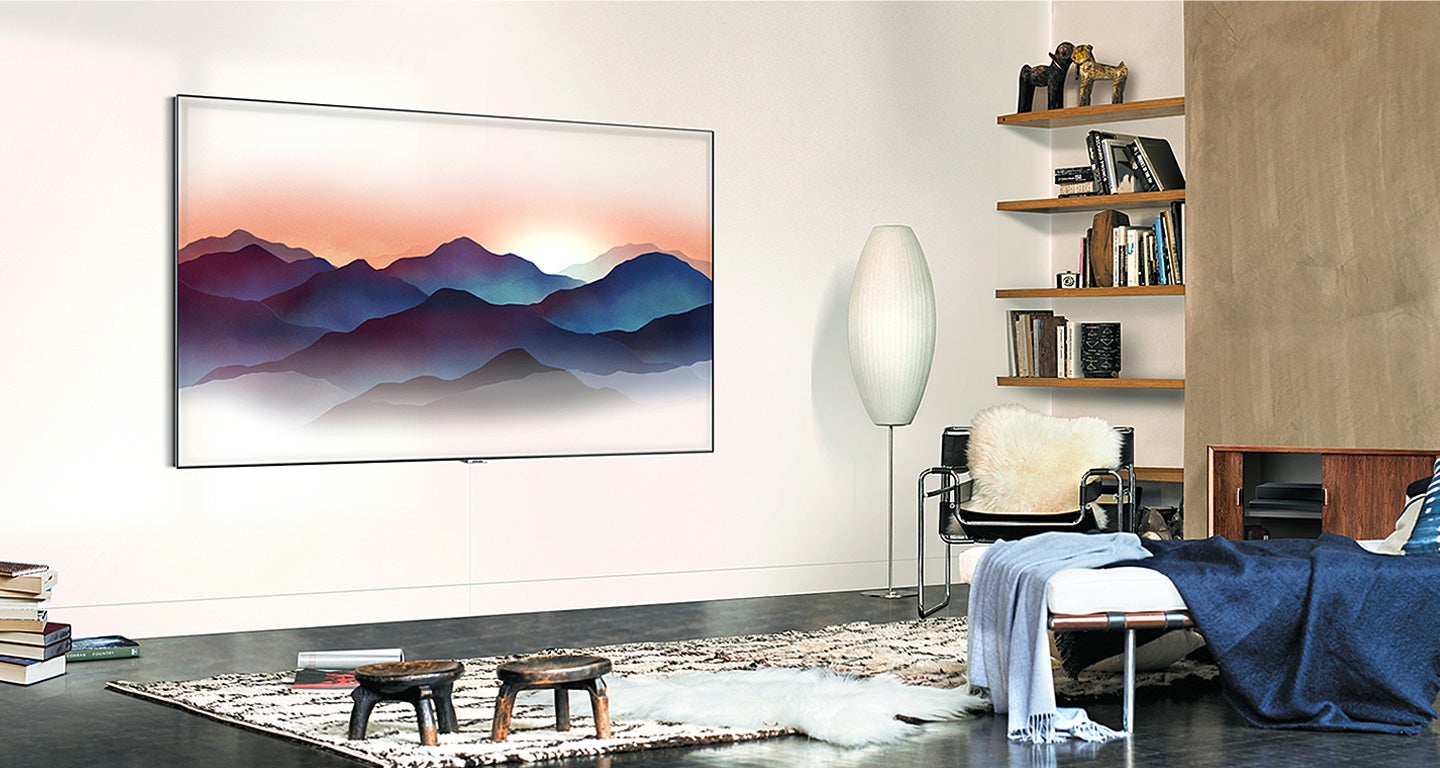Samsung’s new TVs are almost invisible
At an event in New York March 7, Samsung showed off its latest top-of-the-line televisions. But, depending on which ones you were looking at, you might not have seen much.


At an event in New York March 7, Samsung showed off its latest top-of-the-line televisions. But, depending on which ones you were looking at, you might not have seen much.
Samsung’s new QLED line of 4K TVs features a technology the company is calling “Ambient Mode.” Before you mount the TV, you’ll snap a picture of the wall it’s going to hang on—it doesn’t matter if it’s brick, wood, patterned wallpaper, or just a white wall—and then after it’s up, you can set that picture as the TV’s background. The result is something that looks like a floating black rectangle mounted on a wall. Samsung even includes a digital version of the shadow this black rectangle would cast on the wall, as if there really wasn’t a large LED panel sitting in the middle of the thin metal strips.
There are five QLED models, with minor tweaks between them, ranging in size from 49 inches, up to an absolutely massive 88 inches. The televisions have a built-in timer so that the ambient setting will turn off after a while, in order to spare your electricity bill. Viewing the televisions before Samsung’s event, the ambient really did appear to blend them into the walls at first blush. One, against a fake brick wall, was indistinguishable from what was behind it until you really got close up to the screen. The distinction on another, attempting to mimic a painted off-white wall, was a little more obvious. But that’s not really the point—the mode is just intended to give the illusion of invisibility between watching TV, and when you want to show off your new television to a visitor.

Pricing for Samsung’s new TVs wasn’t available at the time of publishing, but they’ll be at the top of end of the market, which tends to range from a few thousand dollars, all the way up to $20,000 for the largest, sharpest models. The TVs are another move away from the giant black rectangles we’ve been hanging on our walls as long as there’ve been flatscreen TVs. Last year, it unveiled the Frame TV, which is meant to look like a picture frame hung on a wall, with a rotating gallery of artwork on display whenever anyone is nearby. The new ambient QLEDs take that same idea, and make the television a little more obvious, and a lot more transparent. Both TVs feature thin cables that combine power and audio-visual feeds into one line (which are then connected to a separate box where you can hook up things like games consoles and cable boxes), which helps aid in the illusion that these are just frames on the wall, rather than smart televisions.
Samsung also announced that it’s partnering with The Weather Channel, The New York Times, and others to overlay content on the ambient TVs. Users will be able to add clocks, headlines, local weather, and their own photos to the ambient screens, which they can queue up from the TV’s menu or the Samsung SmartThings app, which they can also use to quickly set up the televisions.

The new TVs will offer other bells and whistles, designed to entice buyers at the the top end of the television market. At the CES electronics trade show in January, Samsung announced the new SmartThings app, which consolidates many of its older internet-of-things efforts into a central hub. This now extends to Samsung’s newest TVs, which can be used to control any smart device that can connect to the SmartThings system, like Amazon Echoes, Ring doorbells, and Philips Hue lights. Speak into the remote, which is powered by Bixby, the same virtual assistant found in Samsung’s newer Galaxy smartphones, and watch the devices around your home respond to your command. Some of the new QLED TVs, including the Q8 and Q9 models, feature darker blacks than any previous Samsung TV, using a new technology that effectively lights each LED and turns them off when they’re showing something dark, creating completely black areas on the screen.
The interface has also been updated on the televisions, with a new function called “Universal Guide,” which lets users search for any type of content, and then download or switch to the app or TV channel it’s on to watch it. The SmartThings app can automatically send your house’s wifi login to one of the TVs, meaning you won’t have to run to the upstairs closet and read the password off the back of the router to get your TV connected to the internet.
Samsung’s flagship televisions will be available later this month.